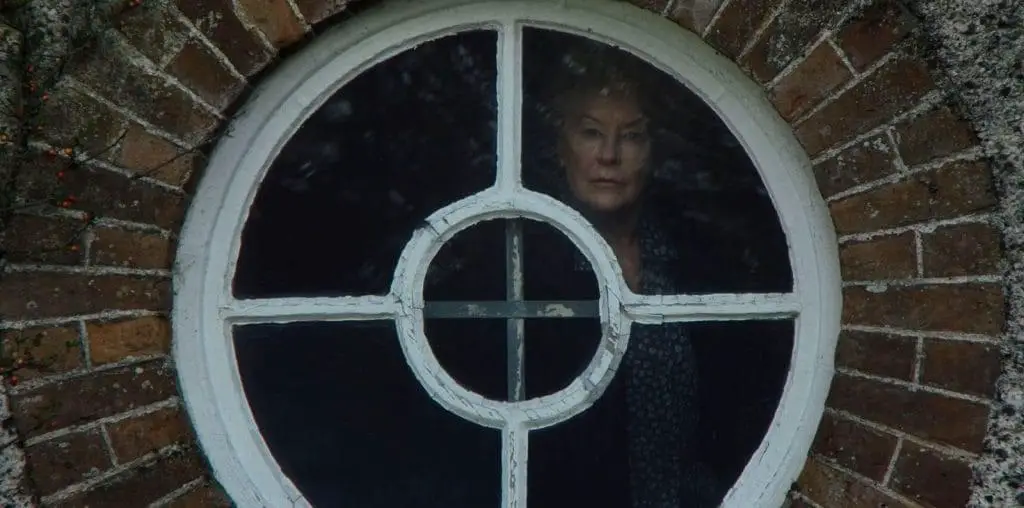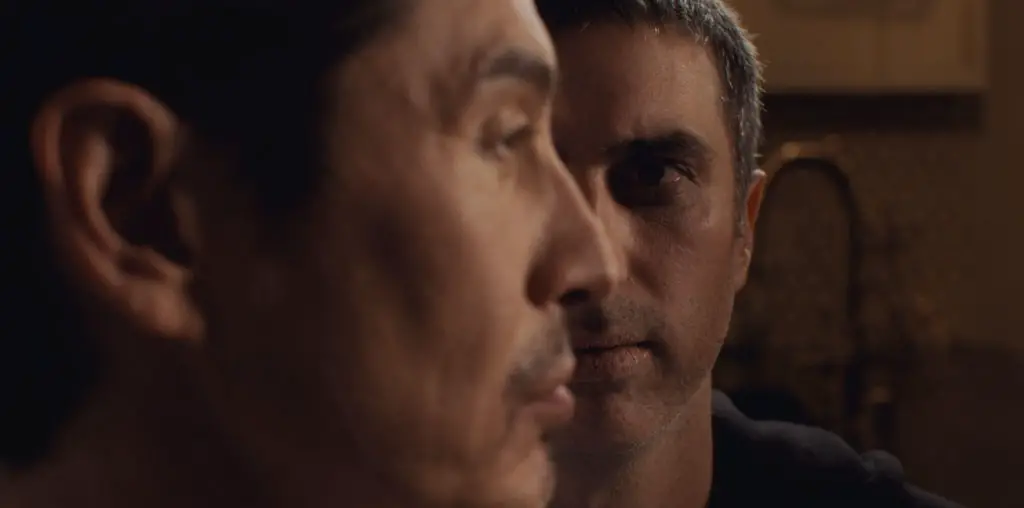
Early in J.R. Bookwalter’s “The Dead Next Door” we are shown a video store filled with lethargic customers who quietly peruse the videos on the shelves. Insert after insert begins to show a man picking out classic horror films, “Dawn of the Dead,” “Evil Dead”, et cetera, movies that no doubt influenced the young filmmaker, but when the man plucking out these horror films goes the cash register to check the films out, we are treated to a pleasant surprise. This man isn’t an ordinary man. He’s a zombie, the walking dead, visiting the video store for the same reasons Romero’s zombies visited a mall. We cut to an exterior shot of the store while panicked customers are fleeing the building, screaming, panicked. Then they’re followed by zombies limping their way through the parking lot.
This scene does more than set the tone for the film, it also clues in astute film fans to who, and what influences have guided and influenced “The Dead Next Door.” This is a film that wears its influences on its sleeve and fills its frames with plenty of gore. Following a special task force known as the Zombie Squad, writer director J.R. Bookwalter takes us through familiar territory while adding his own unique spin on the zombie genre.
The Zombie Squad, a group of elite military men and women, has been assigned the task of ridding the nation of a sudden infestation of flesh eating zombies. While they’re picking off, and getting picked off by, zombies, they clash with Reverend Jones and his group of fundamentalist zealots who believe that zombies are a sign of the end times, and, believe they’re the works of the Almighty, they’re determined to stop the Zombie Squad from interfering with God’s work.
This is a low budget horror movie in the best sense of the phrase. We’re treated to a truly interesting story here, and creative, top of the line gore. As with most low budget horror flicks, the gore here is the star of the film. From full-on rotting corpses to decapitating heads trying to swallow dismembered fingers, the special effects are high quality and extremely effective for a movie like this.
The downside to shooting something on such a low budget is that the acting always suffers, but here it suffers in unique ways. Shot on Super 8mm in 1985, all of the dialogue is ADR’ed in. While most voices seem to fit the actors, there are a few voices that don’t fit. An older woman with a young woman’s voice, for example. But most jarring is the revelation that B movie God Bruce Campbell produced the looping sessions and actually provides the voice for Raimi, the films hero, named after Sam Raimi, who is the uncredited financier of “The Dead Next Door.” (In addition to the Raimi/Campbell connection, for all you “Evil Dead” freaks out there, “Evil Dead II” co-writer, and director of “Intruder,” Scott Spiegel plays a small role in the film.)
The story, however, is what sets “The Dead Next Door” apart from its peers. Like any good horror film—“Dawn of the Dead” and “28 Days Later,” to name but two—“The Dead Next Door” is an investigation into human nature and how people and factions react to extreme circumstances, and the wrench that chews the gears when religion is entered into the equation.
“The Dead Next Door” ultimately suffers from the inexperience of its filmmakers—it should be noted that writer/director J.R. Bookwalter was only 18 when he began production on this film. The first half of the movie flows awkwardly, seemingly having no real sense of where it’s going, and the dialogue is usually stilted and wooden. But, surprisingly, “The Dead Next Door” has more virtues than problems. Yes, it is derivate of the works of George A. Romero. Yes, it is as interested in the gore than it is with anything else. But it also has a wonderful sense of humor that prevents it from becoming a dry, tedious film—a trap that ensnares far too many low budget horror movies, making them practically unwatchable. Fortunately Bookwalter and crew had enough sense, and originality, to flee that trap unharmed, and as a result they’ve produced an enjoyable blood fest with enough original ideas to distance itself from its influences.

